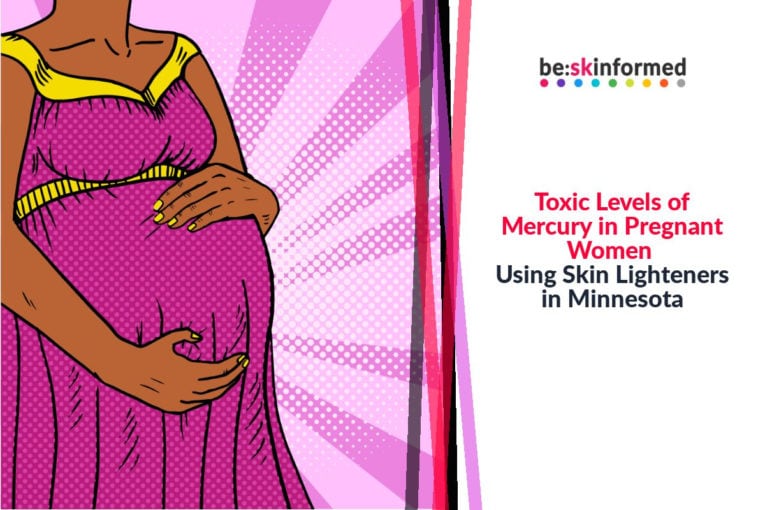Toxic Levels of Mercury in Pregnant Women Using Skin Lighteners in Minnesota
Using certain cosmetic products and eating some kind of fish has been linked to mercury toxicity for a long time.
In a quest to establish the level of exposure to mercury and other toxic materials in expectant women and their babies, the Minnesota Department of Health conducted a study that involved 400 Asian, East-African, Latino, and White women.
The goal of the study, which was released in April 2019, was to also work backwards to establish the source of this exposure.
Women from these communities were targeted due to findings from other studies and genuine concerns from the communities themselves that indicated the possibility of higher levels of exposure.
The results showed high mercury levels in urine and cord blood samples of a significant number of women. Asian women, especially from Hmong led the pack, followed by the East-African women.
Skin lighteners played a role
Further investigation revealed that higher mercury levels were reported in women who had used skin lighteners in the past than in those who hadn’t. Additionally, skin lightening was identified as the main source of contamination for the highest levels.
Follow-up investigations led the researchers into the participants’ homes where they found various skin lightening products. Some among these were exposing the entire families by releasing mercury particles into the air by the mere opening of the cream canisters.
Mercury is banned in cosmetics
Mercury, a neurotoxin that is easily absorbed into the body, is responsible for a host of health problems among them neurological fetal damage and organ damage in adults.
While beauty products containing mercury have been banned in the US and indeed all over the world, the toxic products still find their way to many shelves and especially on the online stores. Sadly, you can become a victim without even knowing it.
“You can’t see, taste or smell mercury in them. So most times women do not know they have mercury in them. They’re not listed on the label often,” an epidemiologist with the state health department, Jessica Nelson, was quoted by MPR News.
Fish Can be Toxic Too
Additionally, women who ate certain types of fish such as northern pike, bass, white bass, walleye, or kingfish more than once in a month showed more mercury levels in their babies’ cord blood, the report indicated.
According to the MDH’s fish consumption guidelines, pregnant women and children are advised to eat such fish once a month or less. In line with this guideline, the website chooseyourfish.org offers guidance on safer fish consumption.
Other substances were detected- but at low very low levels
Other contaminants tested during the study were lead and cadmium, metals that have been known to cause fetal brain damage. Fortunately, the department reported that these were found at very low levels.
Inspiring hope in the fight against mercury exposure, the Minnesota Commissioner of Health Jan Malcolm had this to say,
“Mercury exposure can be a significant health concern, but in this case, the good news is that those groups we found to be at elevated risk have the power to reduce that risk.”
The statement could have been backing the very reason why the researchers chose to test pregnant women in the first place; this group of women is more likely to heed public health warnings because of the motivation to protect their children.
These findings are meant to discourage immigrant and refugee women from using skin lightening products from their countries which have been found to contain mercury and other harmful compounds.
The fight continues
The fight against dangerous skin lightening has been on-going for a long time, and in a world where light skin is perceived as the benchmark for beauty and economic success, it seems like there is no end in sight. Still, public health officials and advocates are determined to make an impact, if only a little.
The above move was welcomed by Amira Adawe, a Somali-born Minnesota Public health Advocate and a great asset to the study.
“The MDH study validates even more why we need to establish this issue as a public health issue,” Adawe said.
Adawe has been on the fore-front in the fight against harmful skin lightening since she moved from Somalia to Minnesota in 2000. Her efforts include scanning the market for harmful skin lightening products, advising public health agencies on the same, and hosting educational outreach sessions and radio shows among others.
She also created the Beautywell Project, an initiative meant to end exposure to harmful skin lightening chemicals and promote women’s confidence in their natural skin.
In her words, “My dream is that every woman stops using skin-lightening creams and trying to change their colour,” she said, “and that they are happy for who they are.”


